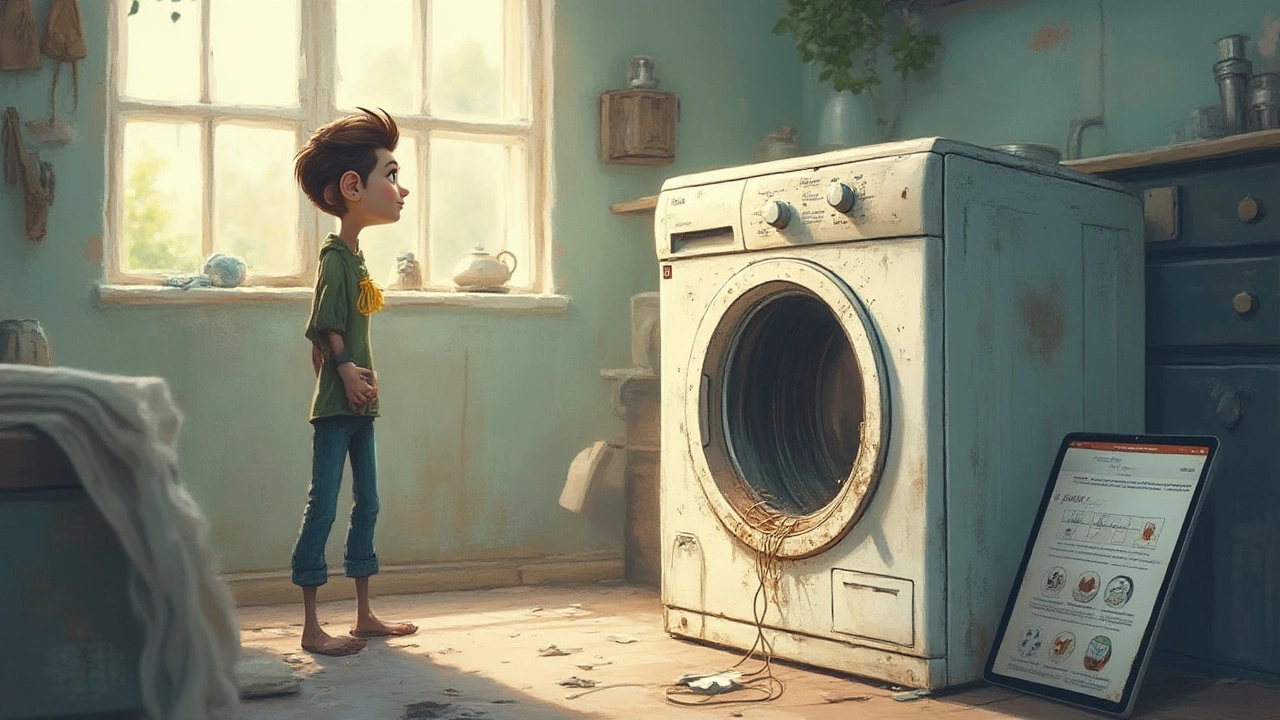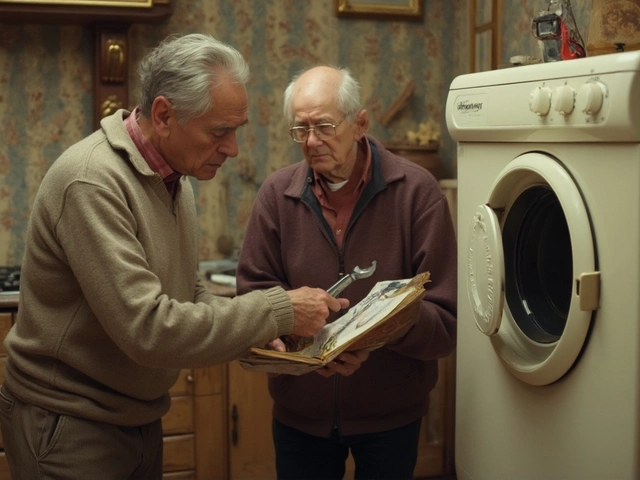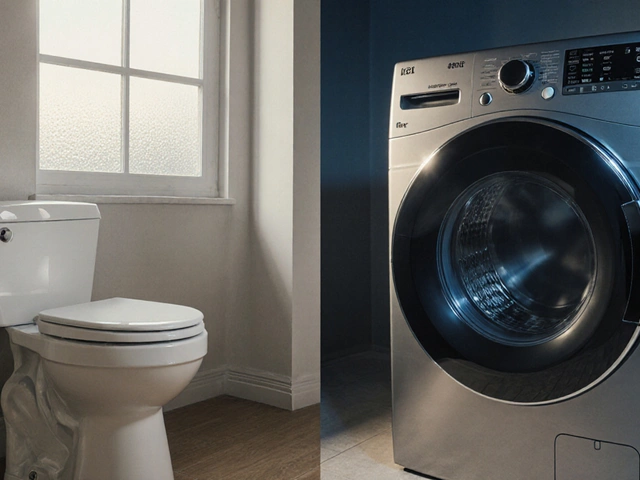Imagine tossing a load of wet towels into your dryer, pressing start, and hearing a sound like a metal band warming up in the next room. Or maybe it runs quietly, but when you pull out your clothes, they’re still damp and cold. Dryers, like the rest of us, have a lifespan. But knowing when to stop repairing and just move on? That’s trickier than it sounds. It’s not just about saving a few quid — sometimes a dodgy dryer can be downright dangerous. Let’s dig in.
Understanding Common Dryer Problems and the Cost of Repairs
It’s easy to think a dryer is just a spinning drum and a heating element, but under the hood, it’s a bit like a Swiss watch. You’ve got thermostats, circuit boards, safety fuses, even moisture sensors. A common problem in the UK, oddly enough, is a failed heating element due to our higher mineral content in tap water—leftover residue from laundry that builds up over time.
Before you shell out for repairs, let’s look at the numbers. According to Checkatrade’s 2024 report, the average cost to repair a dryer in the UK hovers between £80-£180. Parts like heating elements or motors range from £40 to £120 before labour. Might not sound outrageous until you factor in the age and reliability of your machine. If your dryer is pushing eight to ten years, chances are the rest of the parts are as weary as you are before your first coffee.
Here’s a quick breakdown to show common problems and what they cost to fix:
| Issue | Average Cost (GBP) | Likelihood After 8-10 Years |
|---|---|---|
| Heating Element | £90-£140 | Common |
| Drive Belt | £40-£70 | Very Common |
| Motor | £110-£250 | Uncommon, but expensive |
| Thermostat | £40-£80 | Possible |
| Control Board | £120-£220 | Uncommon |
Most repair pros will tell you: when the cost of repair gets close to half what a new machine costs, it’s time to call it quits. For reference, new mid-range dryers in 2025 go from £250-£450 in the UK. Even with a warranty, stacking repairs on a tired machine starts to feel like paying to resuscitate a racehorse with a broken leg.
When Fixing a Dryer Isn’t Worth the Money
Repairing a dryer only makes sense if the issue is minor and hasn’t happened before. But some fixes just don’t add up. If your drum has a crack (you’ll hear banging as it spins), or the inside is rusted, it’s not a cheap fix. Control boards, the dryer’s brain, are pricey and techs may struggle to source them for older units. A classic warning sign? Multiple issues stacking up at once — say, the drum belt goes, then a month later the heater packs in too. These are domino repairs: fix one, another falls over.
You should also look out for recurring problems. If you’ve replaced the same part twice within a few years, there’s probably something else wrong that’s causing the part to fail. Maybe it’s a wiring issue, or just natural wear, but either way, it’ll never stop costing you.
Brand reputation matters, too. Some brands, like Miele and Bosch, are famous for their reliability. If you’ve got a no-name budget dryer from a supermarket, the repair value shrinks fast. There’s a turning point where you just run out of replacement parts — maybe the manufacturing company isn’t even around anymore. If the parts have to be shipped from halfway round the world or bought used online, you’re taking a risk with both cost and reliability.
The bottom line: Sometimes, buying a new dryer saves you money, stress, and a few headaches. I once tried to patch up an old White Knight (a staple in British student flats), only to discover replacement thermostats weren’t even made for my model anymore.
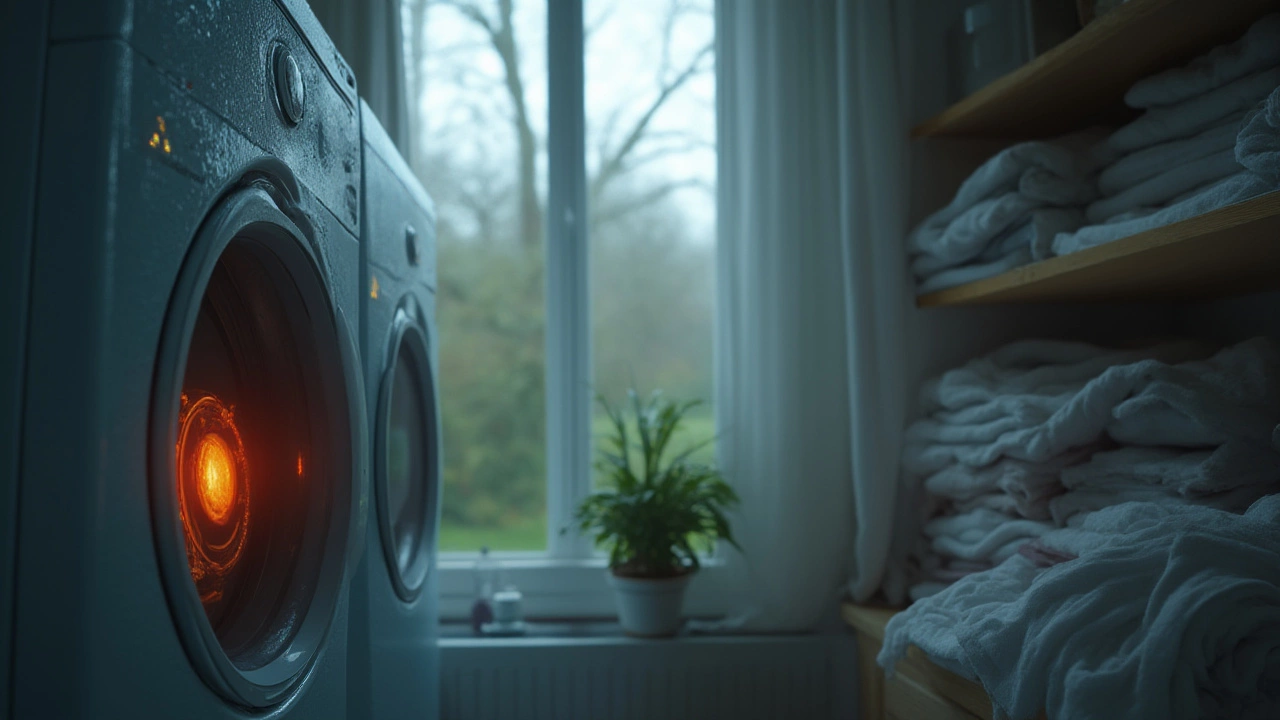
Clues Your Dryer Has Reached the End of the Line
Some warning signs spell out, in neon, that it’s time to stop repairing. Listen for grinding, squealing, or scraping noises; these usually mean a bearing or drum support is shot. That’s a pricy repair and not one you want failing in the middle of a busy week.
If your dryer is taking way longer to dry than it used to, or your clothes come out hotter than usual — even slightly singed — these are classic signs of worn sensors or a bad thermostat. Don’t shrug this off. Faulty thermostats and sensors can override safety limits. According to the UK’s Fire & Rescue Service, tumble dryers were linked to over 800 domestic fires in 2023 alone, many down to electrical issues or overheating. Safety should always drive these decisions.
Persistent smells of burning, melted insulation, or electrical burning are bad news. Same if you see sparks or scorch marks on the plug. Anyone who’s ever smelled fried wiring knows what I mean — don’t risk it. Unplug the dryer and call a professional or a recycling service.
You might notice fabric damage or unexplained marks on your clothes. Sometimes, it’s the drum or lint trap falling apart, shedding sharp edges. Replacing entire drums or interior panels is rarely worth the hassle or money. Dryers with broken doors or warped frames rarely seal properly after a repair, which means heat and moisture leak everywhere — not great for your electric bill or your home.
The Importance of Energy Efficiency and Upgrades
Dryer tech isn’t stuck in the stone age. If yours is more than seven years old, chances are you’re paying more in electricity than you think. Energy performance for appliances changed a ton in 2021, when the UK switched to new A-G ratings for everything, moving the goalposts. A heat pump dryer (the newer type) uses up to 50% less power than a condenser model from just a few years ago.
Here’s a stat you probably didn’t know: The Energy Saving Trust claims you could save around £60–£100 per year by replacing an ancient vented model with a modern A-rated heat pump dryer. If you add this up over a few years, a new machine can pay for itself, just in energy savings.
Smart features are worth thinking about, too. Modern dryers can sense exactly how damp your clothes are, switching off before your stuff gets cooked. You’ll see mobile app controls, self-cleaning condensers, and timers you can control from the sofa. Once you’ve had a machine that texts you when your laundry’s done, it’s tough to go back to the old ways.
If eco-friendliness matters, new dryers with heat recovery systems waste less heat and water. That’s something to feel good about, especially in a world that’s melting like a forgotten ice lolly. The days of the rickety, power-hungry dryer are fading — unless you keep pouring pennies into life support.
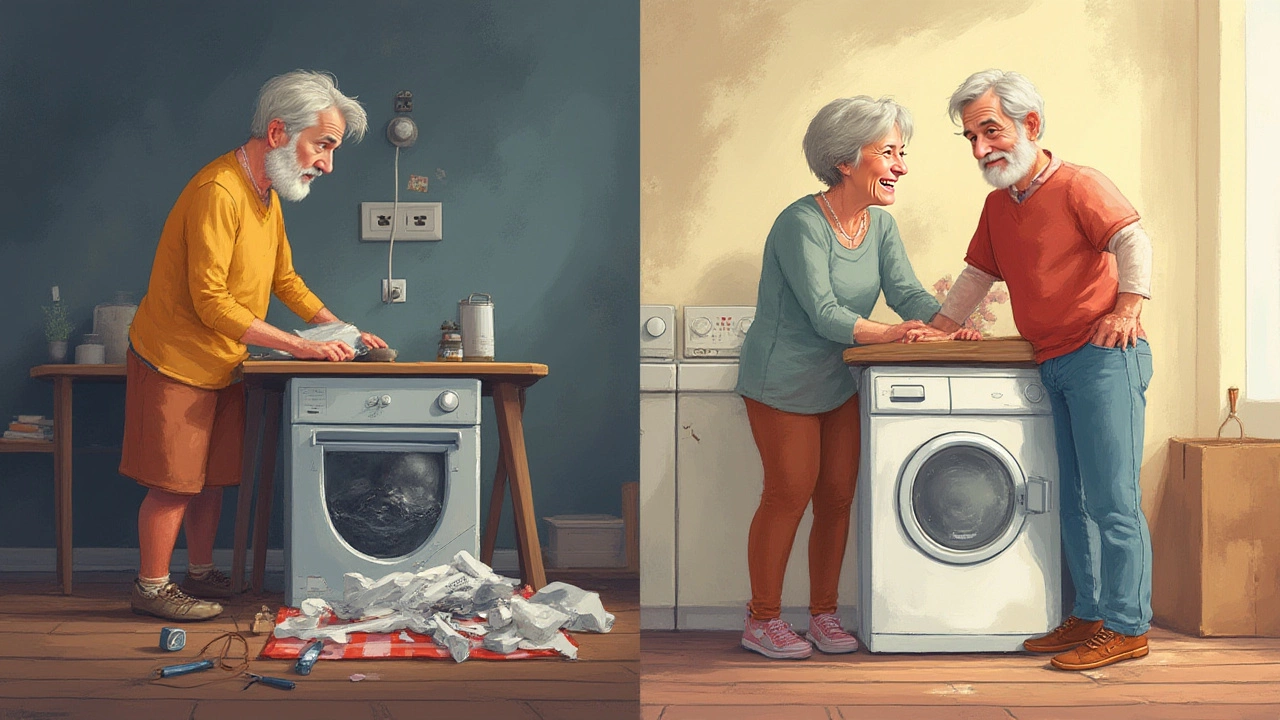
Security, Warranty, and Environmental Concerns
One big headache with old appliances is security — not digital, but real-world fire and hazard safety. Dryers account for more fire brigade call-outs than washing machines in the UK. Most insurance companies won’t pay out if your five-times-repaired dryer goes up in smoke and you ignored hints that it’s unsafe. It’s not just about the machine, but the safety of everyone in the house.
There’s also something called a “planned obsolescence curve” — manufacturers design appliances to last a certain mileage, usually seven to twelve years, then replacement becomes tricky. Once your dryer is out of warranty, repairs cost more out of pocket, and the time it spends out of service means lots of hanging socks on radiators. Not ideal.
On the recycling front, most UK councils offer collection of old appliances, and a surprising number of parts actually get salvaged or turned into raw materials. Several charities will even collect working dryers if you’re upgrading to a more efficient model. Bottom line: binning the ancient dryer doesn’t mean it’s landfill-bound.
Here’s one final tip: Before you swap your dryer, check for government schemes. Sometimes, there’s a rebate for replacing old white goods, or trade-in bonuses from big retailers. A little extra research can save a few quid and put your old machine to use elsewhere, rather than rotting in a landfill.
Not every busted dryer belongs in the skip, but sometimes you’ve just got to let go. If fixing it costs more than half the price of a new one, if safety is at risk, or if the energy numbers just don’t add up, it’s time. Get rid of the old beast and give yourself — and your utility bill — a fresh start.

